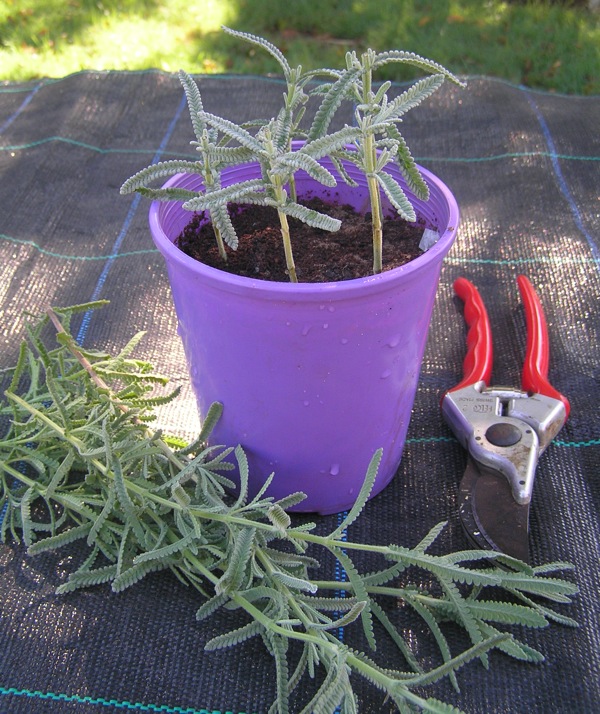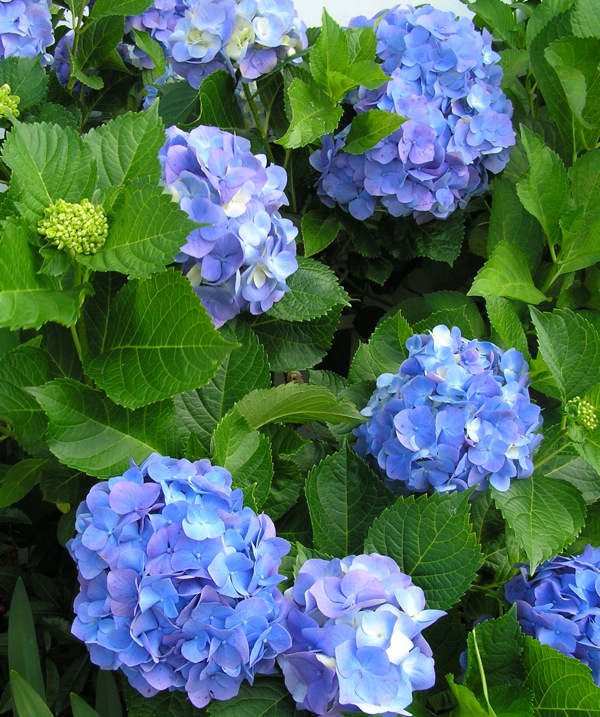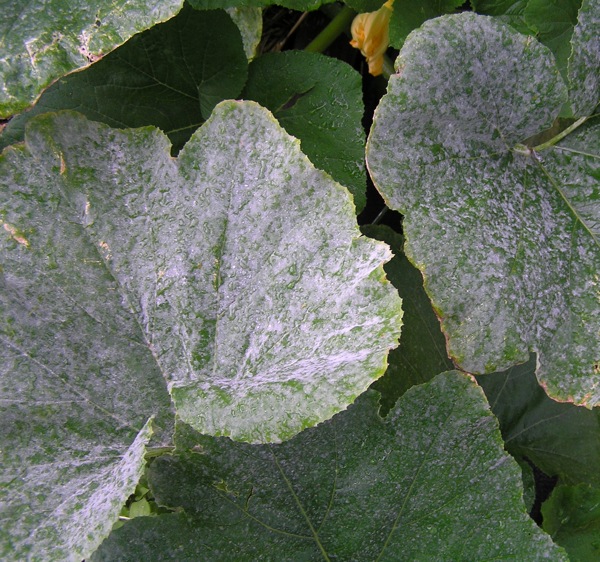January to March is traditionally hot and wet in the subtropics, which means just one thing… plant disease. That doesn’t mean everything’s going to cark it folks… some plants, especially the true tropicals like heliconias love this hot steamy weather. It’s the borderline things that tend to suffer, plants that prefer a milder, drier heat and are more suited to Mediterranean or temperate climates.

Cut back lavender & strike some cuttings
Lets look at lavender for starters. They’re a classic cool to temperate loving plant, and most forms hate the subtropics. There are a few that hang in there… the most hardy I’ve found is the French lavender. But as I peer outside into the rain from my office window, I see my only surviving specimen turning to mush. Those soft furry leaves of lavender just grab onto the raindrops and never let go. Now, I’m not going to panic. I’ve seen it happen before. The best thing can do is to gently thin out some of the growth … just the new growth at the tips – to allow better airflow around the plant so that the leaves dry out quicker. Don’t waste those cuttings either – it just happens to be one of the best times of year for striking lavender – so pop them into a pot filled with 50/50 coarse sand and coir peat, and place them in a cool sheltered spot. You’ll end up with loads of new lavender plants… and you might just need those as replacements if things get really wet. Anyway, back to my original plant… if it makes it through the summer, I’ll give it a better trim in autumn., and it’ll be happy as Larry.

Watch out for powdery mildew on hydrangea
Powdery mildew disease loves this sort of weather, and you’ll start to see it occur on all sorts of ornamentals, particularly crepe myrtle, hydrangea and begonia. It’s difficult to control in crepe myrtles because of the size of the plant. No need to worry – they’re deciduous so you can always look forward to a fresh flush of new growth next spring… just put the blinkers on and don’t look at it for now. The other two are easier to treat, and now’s the time to take precautions before the disease takes hold. A lot of people will recommend spraying with milk to control powdery mildew – it works, but I just find it a bit stinky when the milk goes sour on the leaves. If you are looking for a safe control, try powdered sulphur or a product called eco-fungicide, both available from garden centers. Apply them in the cool of the afternoon and reapply after rain.

Powdery mildew on squash
Over in the vegie patch, things like cucumbers, zucchinis and silver beet are taking a real pounding from the rain. If you’re really diligent, you can generally keep one step ahead of disease, simply by getting out there every one or two days and removing affected foliage and putting it in a plastic bag and into the bin. That’s a good rule for dealing with any disease in the garden. However, it’s hard to stop the impact of the rain when it really comes pelting down. I’m thinking of giving these sensitive babies a little extra protection this year by setting up a simple frame with a clear plastic cover over the top – just to keep excess moisture off the plants. Hopefully this will get them through. I’ll let you know.
